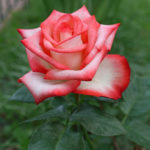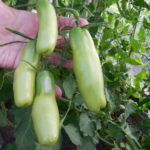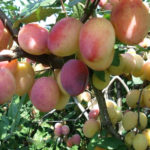Apple variety Ola (decorative)
In order to bring a zest to the garden or to make a summer cottage attractive, it is not at all necessary to experiment with capricious exotic plants. Landscape designers and ordinary summer residents use for this purpose a culture familiar to everyone - the apple tree. But not simple, but decorative. And there is plenty to choose from. There are many varieties of domestic and foreign selection. Moreover, the latter take root pretty well in the Russian climate. Take the Ola variety, for example. Translated from Spanish, the name means "avalanche" or "wave", which corresponds to the abundant spring flowering of this culture. The variety was bred by Polish breeders, but in Russia it is very popular. But planting a decorative apple tree in the garden for many gardeners is not just a way to acquire a rare beauty specimen. An experienced gardener knows that an ornamental plant will not only attract the admiring glances of aesthetes, it is also an excellent pollinator, therefore it will actively attract pollinators to the garden of insects. And this, in turn, will have a beneficial effect on increasing the yield of ordinary apple trees.

Description
The slender beauty Ola is tall, but she grows slowly. Adding 30 - 40 cm each year, by the age of seven to eight years the tree grows to 4.0 - 5.0 m. The young apple tree is decorated with a rounded crown. In adulthood, it grows, becomes slightly spreading, its diameter can actually correspond to the height of the tree - about 5.0 m.At the request of a designer or gardener, the crown can be adjusted and given a shape that fits into the landscape. Skeletal branches rarely grow, but thanks to the good branching of the shoots, the crown acquires an elegant openwork appearance. The bark is dark brown, with a grayish tint, smooth. Lentils are rare, light, round.
In early May, our heroine is covered with large flowers, collected in inflorescences of 3 - 5 pieces. Due to the abundance of flowers, it seems that the apple tree is covered with bright lush foam and during this period it is in no way inferior in beauty to the famous sakuras. At the beginning of the dissolution of flowers, the color is deep pink, then slightly lightens. The petals are located freely, have an elongated shape and a rounded apex. Filaments are long, light pink, yellow anthers. Sepals are colored, pubescent. Pedicel is long, thin, pubescent, anthocyanin color. During flowering, Ola fills the air around with a wonderful aroma that attracts bees. Flowering lasts from 10 to 14 days, during this period some flowers fade, but others come to replace them. After the flowering process is over, the leaves come to the fore, so the decorative effect changes somewhat, but is not completely lost.
The foliage is good. The opening young leaves have a bronze-red hue, but then their color turns green. It is the successful combination of green foliage with bright fruits that attracts gardeners so much. True, in the fall, the leaves will change color again and acquire brown shades. The leaf blade is medium in size, elongated-ovoid, with a slightly shiny surface, folded in the form of a boat along the central vein. The young leaf has a slight hairy pubescence. The apex of the lamina gradually sharpens, the base is rounded-wedge-shaped, the edges with small obtuse serration. The petiole is long, medium-thick, slightly colored.
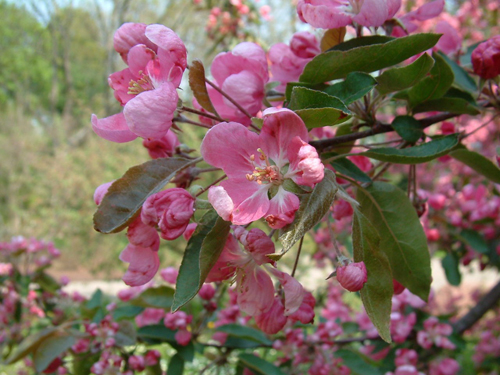
The greatest decorative effect, according to most gardeners, occurs during the ripening period of the fruit. Apples are very tiny, no more than 3 cm in diameter. During ripeness, they become deep red-purple, while still shining glossy in the sun. Their shape is rounded, the calyx is drooping. Thanks to the long and thin stalk, apples look like bright toys, but they look especially festive when the first snow falls. For all their decorativeness, they are quite edible.It is not very convenient to use them in their natural form as a real apple because of their size, but it is very possible to prepare wonderful blanks. In winter, jam made from whole fruits, bathed in rich red thick syrup, will be an excellent reason to gather at the table and remember the warm summer. By the way, about the taste, many gardeners say that in their natural form, fruits are sweet and sour, the taste can be called good, but not everyone will like the astringency present.
Characteristics
- Ola's first flowering can show as early as the next year of planting. But the flowers will be few, so it is best to cut them off to give the plant the strength to root successfully. An ornamental plant will show abundant flowering and fruiting in the second year;
- fruits ripen in September. They can be collected or left on a tree. Picturesque fruits will decorate the apple tree for a long time, as they do not crumble throughout the winter. Therefore, for a winter feast, birds wintering in the region will often visit your garden;
- some sources indicate that our heroine is self-fertile, so you can refuse to plant another variety and save space for another culture;
- winter hardiness is good and quite acceptable for the Central region of Russia, including Moscow. The apple tree can withstand temperatures down to minus 29 ° C. It is also pleasing that the plant can survive short-term unfavorable periods, when thaws are again replaced by a decrease in temperature;
- the resistance of a picturesque apple tree to winds is noted;
- this variety actively resists not only the main diseases of the culture - scab and powdery mildew, but also pests. Therefore, its decorative effect remains at a high level during any growing season. Although, nevertheless, sometimes there is information that in especially unfavorable years the plant can get sick.
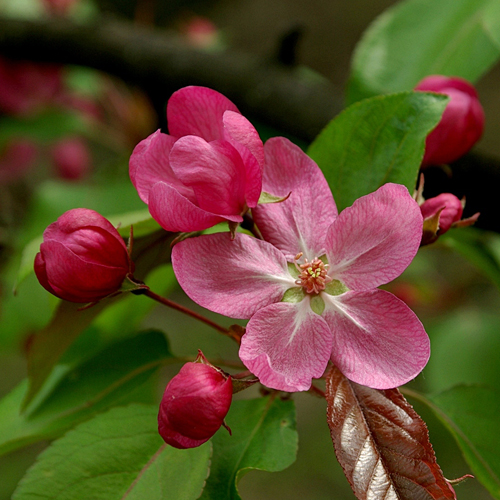
Planting and leaving
You can plant the beautiful Ola apple tree in spring and autumn, taking into account the climatic features of the region. The culture cannot be called unpretentious, because it has certain requirements for planting and care. Our heroine prefers well-lit areas where she will show maximum decorative abilities. It can put up with partial shade, but in a thick shade it will have an unsightly appearance. The soil should be nutritious, loose, oxygen and moisture permeable. The plant does not tolerate heavy and saline soils. If the soil on the site does not meet the stated requirements, a planting pit that is larger than the standard size will help to correct the situation, which must be filled with a suitable soil mixture. Watering is carried out as needed, maintaining the moisture content of the soil in a moderately moist state. As top dressing, preference is given to phosphorus-potassium fertilizers. Treatment against diseases is carried out in early spring, before the onset of swelling of the kidneys. In order to form the crown and stimulate flowering, pruning is carried out in the spring, removing shoots and broken branches growing inside the crown.
Use cases
The decorative Ola apple tree will perfectly fit in the garden. It can be planted as a solo plant on a green lawn or in a group planting, as a hedge, combined with shrubs or other perennials. The tree, which adapts well to the surrounding conditions, is also used to decorate city parks and squares. In the spring, the blooming culture charges with positive emotions, in the summer day it allows you to enjoy a pleasant shade, and in autumn and winter it inspires optimism, delighting with an unusual scattering of ruby fruits on the branches.
Ola is considered one of the most successful ornamental apple varieties of Polish selection. She is smart in any growing season, and the crown is easy to shape. The winter hardiness of the plant allows it to be grown in most regions of Russia, except for the coldest ones. In addition, the culture is considered decorative and fruit, and its harvest is suitable for human consumption.Of course, in order to maintain the spectacular appearance of our heroine, we will have to make some efforts in spring and autumn, but how nice it is to enjoy all the stages of decorativeness of this amazing plant.

